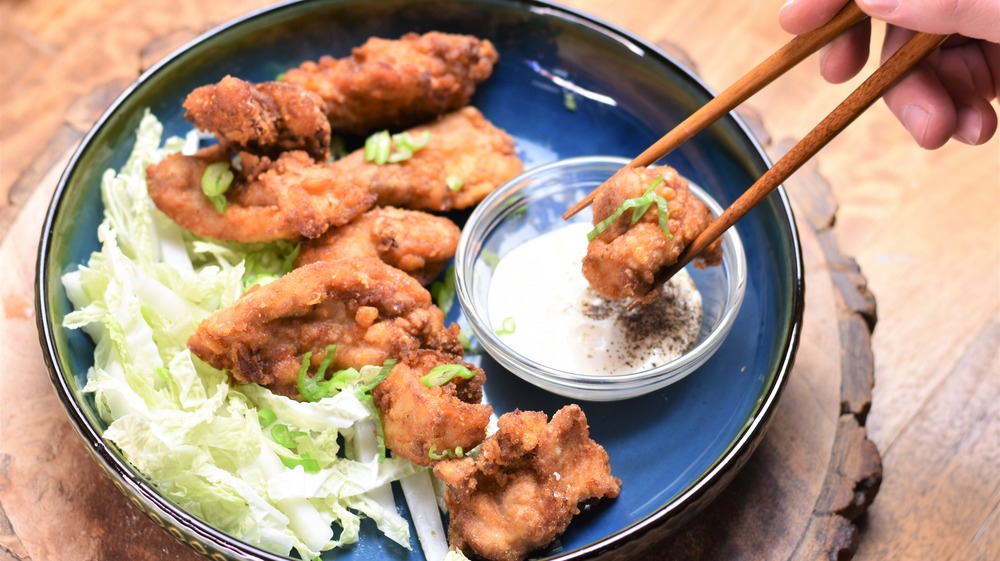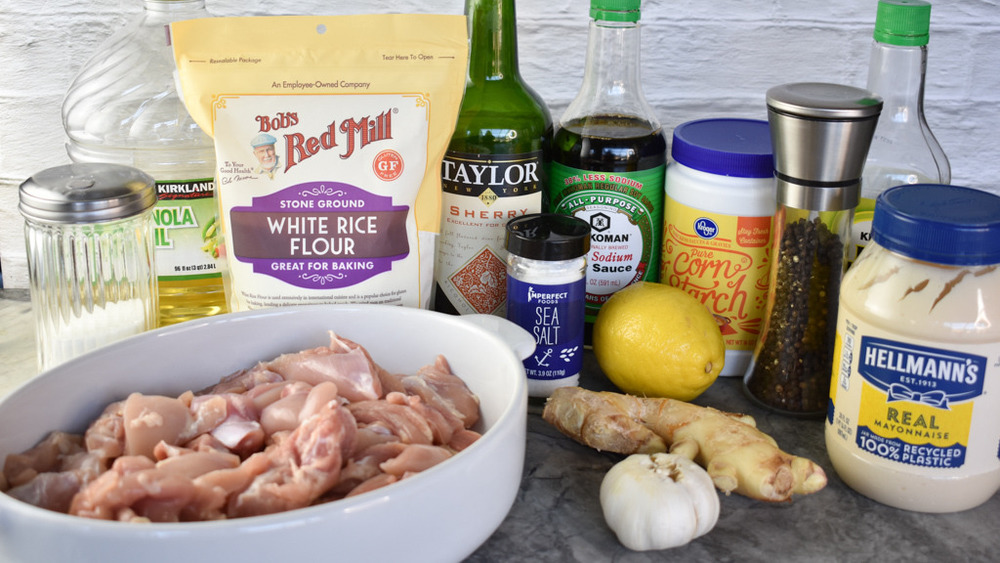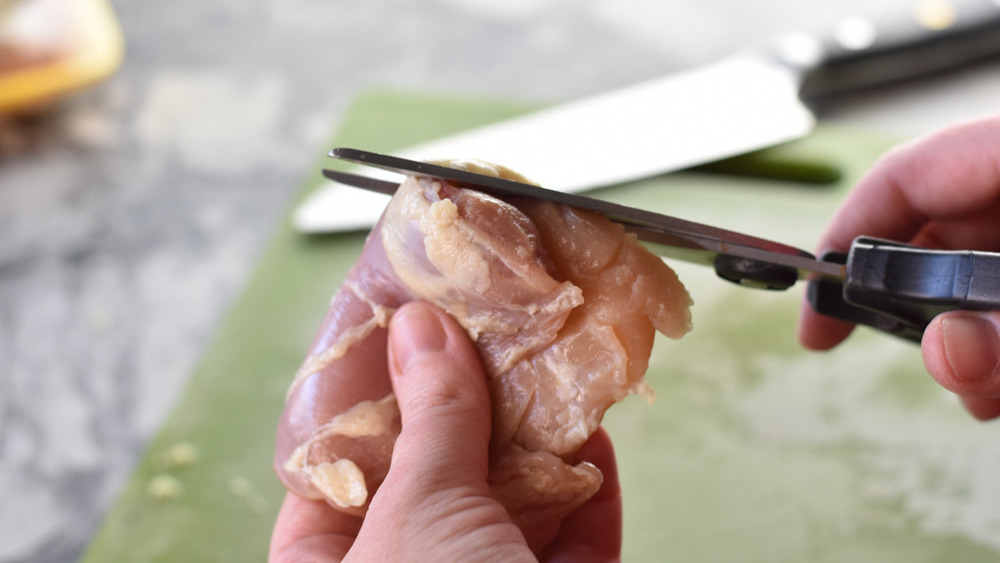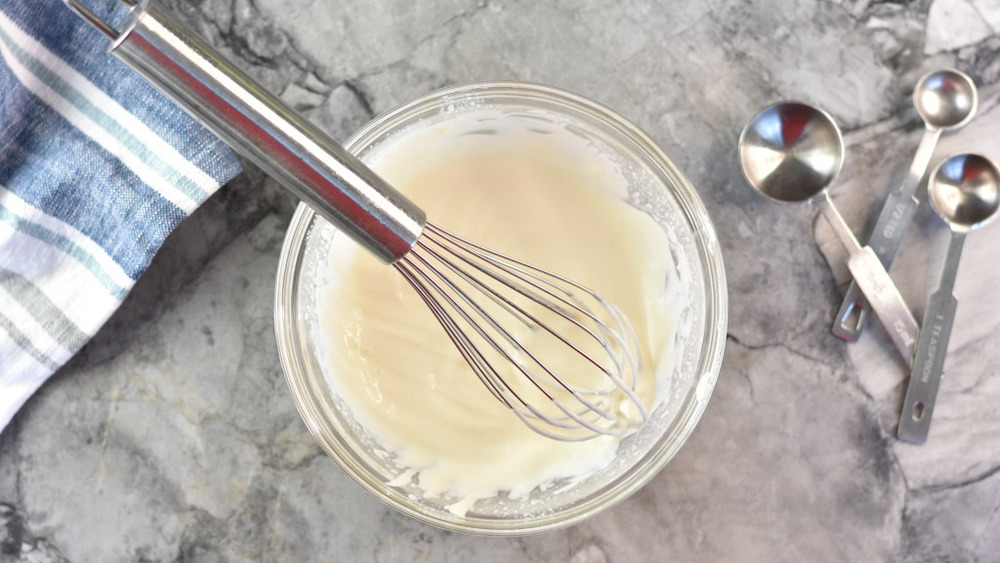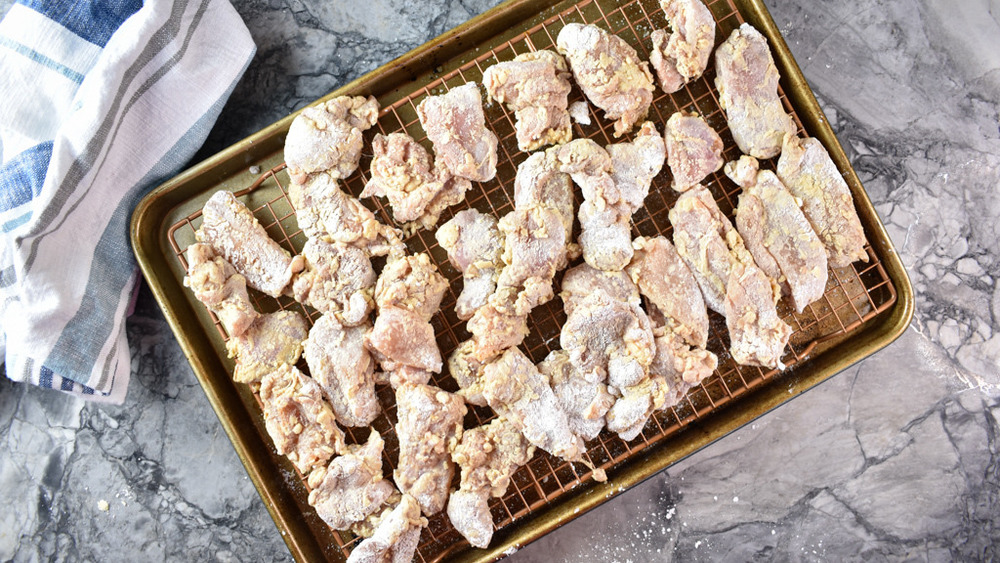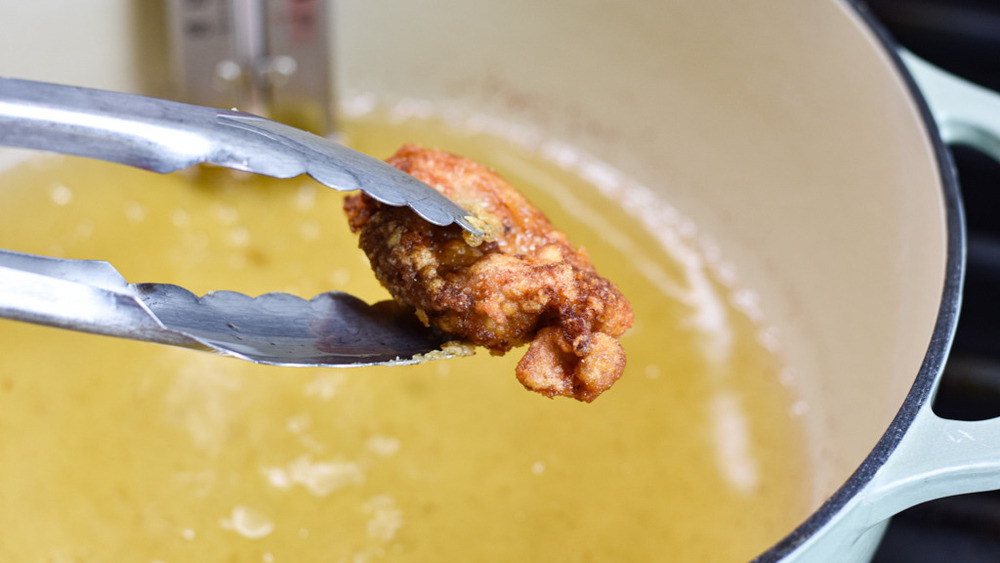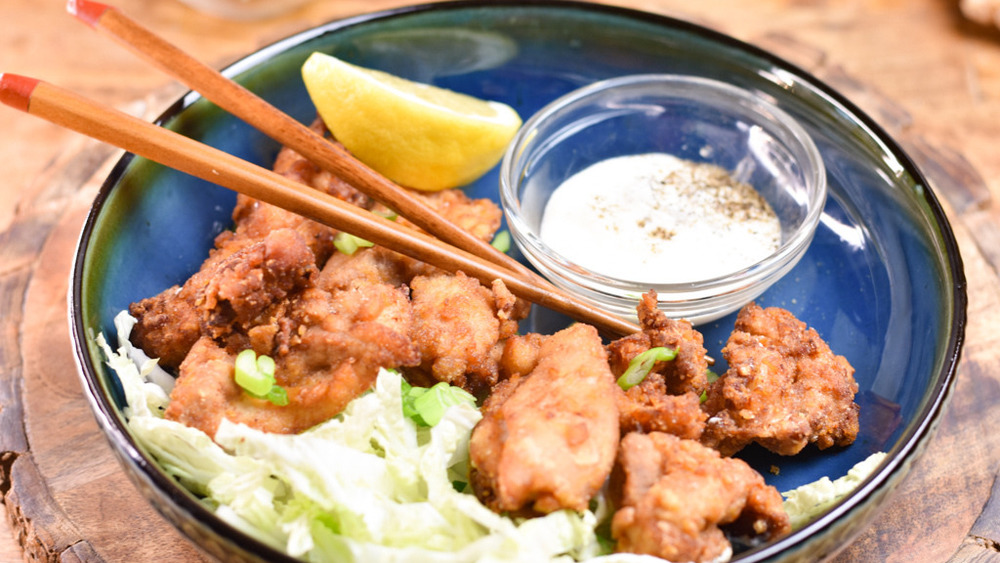Homemade Karaage Recipe
For many people across the United States, fried chicken is up there on the list of ultimate comfort foods. It's hearty, satisfying, and accessible. Yet it's not just a stateside joy — people around the world love the dish, and trying a new style could make you fall for fried chicken all over again. Enter karaage, a delicious style of Japanese fried chicken.
This karaage recipe from Stephanie Rapone, the founder of Pantry to Plate, is all that you need to experience the pleasures of karaage. The basic steps and ingredients are similar to other types of fried chicken with a few notable changes. Still, if you know how to make other types of fried chicken, you'll do just fine with this recipe (and you'll still do fine even if you're not an experienced fryer).
The coating on karaage "is lighter," Rapone says, "and it's nice small boneless bites, so it's easy for the kiddos." Pair it with a quick homemade dipping sauce, and you have yourself a new favorite.
Gather your ingredients for this karaage recipe
The perfect karaage recipe, like most styles of fried chicken, only requires a simple set of core ingredients. You're going to want the tangy, balanced sauce to go along with the chicken as well, which uses almost as many ingredients as the chicken itself. The good news is that you likely have most of these ingredients already, and those you don't are easy to find.
For the chicken, you'll need to start with boneless, skinless chicken thighs. The marinade requires dry sherry (or sake or rice wine), sugar, soy sauce, ginger, and garlic. Cornstarch and rice flour make up the fry coating, and canola oil will do the trick for the frying oil. Green onions make a great garnish but are optional.
On the dipping sauce front, you'll need mayonnaise, rice vinegar, lemon juice, sugar, salt, and fresh ground black pepper.
Prepare the ginger and chicken for this karaage recipe
The first thing you'll need to do for this karaage recipe is to break down your whole ginger so that it's ready for the chicken. Don't worry if you don't have a peeler for this — all you need is a spoon (yes, a standard, everyday spoon). Simply take a large piece of ginger root, hold it in one hand, and then with your other hand, scrape the tip of the spoon along the ginger. The skin will come straight off, and best of all, you don't have to deal with any pesky ginger fibers getting stuck in your peeler when you want to use it for potatoes, carrots, or whatever other vegetables you typically peel.
Once that's done, you can either grate your peeled ginger on a rasp grater (like a microplane) or finely chop it up.
How much you have to do to the chicken thighs depends on the meat that you have. Cut off the extra fat, and then cut chunks that are no more than an inch wide. This will ensure it cooks evenly. Finally, stir the chicken, ginger, dry sherry (or sake or rice wine), two teaspoons of sugar, quarter cup of soy sauce, and garlic together. Cover the whole mixture and let it rest in the fridge for at least 15 minutes.
Mix up the sauce for your karaage
A good sauce can tie a meal together just as a good rug can tie a room together. While you may have your favorite sauce packets stored away in a drawer somewhere, Rapone suggests a homemade dipping sauce with a mayonnaise base. It's well worth the effort (which is minimal).
All you need to do for this karaage sauce is combine a cup of mayonnaise, a tablespoon of rice vinegar, juice from half a lemon, and a teaspoon of sugar. Whisk that all together until it's well integrated, and then top it with a pinch of salt and fresh ground black pepper just before serving.
Though it may be harder to find than traditional mayonnaise, Kewpie — a Japanese mayo that uses only egg yolks versus the whole egg — is the ideal option. "If you can find Kewpie, you can just use that with a sprinkle of salt and fresh ground black pepper (no need to make it into a sauce)," Rapone says. "Lite/vegan mayo would work, but NOT 'salad dressing.'"
Make the fry coating for your karaage
As delicious as the right karaage sauce may be, the chicken is still the main event. It's time to get back to that main event after whisking up the sauce while waiting the 15 minutes for the chicken to marinate in the fridge.
First things first, grab a rimmed baking pan with a wire rack on top. This'll be where you set your chicken after coating it in cornstarch and rice flour. You'll also need to set up a cookie sheet or large plate and line it with paper towels for when you take the chicken out of the hot oil (more on that later).
Make the coating by mixing half of a cup of cornstarch with two tablespoons of rice flour in a large dish. Using rice flour instead of wheat flour "makes it lighter," Rapone says, and it also "makes the recipe gluten-free."
Take the chicken out of the fridge, and add each piece into the cornstarch and rice flour mixture. Coat the chicken evenly — the more even the distribution of the cornstarch coating, the more balanced each bite will be. Set the chicken pieces on the wire rack, and let them sit for five minutes before moving forward.
Fry the chicken for your karaage
While you're waiting on the chicken to rest for five minutes, get the frying oil going in a large Dutch oven or a large high-sided skillet. Add a quart of canola oil to your pot of choice and heat it to 350 degrees Fahrenheit over medium-high heat. Use a candy or frying thermometer to check that the temperature is correct throughout the cooking process before putting the chicken in.
Once the temperature is right, add in about a third of the chicken and fry it until it's golden brown and the internal temperature reaches the safe level of 165 degrees Fahrenheit. This should take between four and six minutes.
"If you add too much, the oil temperature will drop, and it won't cook as fast, which actually makes it soak up more oil. That makes it greasy instead of crispy," Rapone says. "Also, it can make the oil level rise and overflow the pan."
Take out the pieces as they're done and put them on the paper towel-lined cookie sheet or platter, where some of the grease will drop off. Season the chicken to taste with some sea salt as soon as it's out of the oil.
Plate your karaage and prepare for leftovers
All that's left to do once you take the chicken out of the oil and salt it to taste is to plate up the pieces and serve them alongside that homemade dipping sauce you made earlier (don't forget to top the dipping sauce with a little salt and fresh ground pepper to taste). Two optional things to add to the serving plate: the other half of the lemon that you used cut into easy-to-squeeze slices and some fresh-cut green onion.
This karaage recipe is great for a family or group of close friends, as it's easy to whip up and share. It's easy to finish off a plate (even two pounds of chicken can go quickly when prepared the right way), but if you have leftovers, they'll last five to seven days in an air-tight container in the refrigerator. The best way to reheat the karaage so that it doesn't lose any of the crispiness, Rapone says, is to pop it into an air fryer at 250 degrees Fahrenheit for two to four minutes.
Karaage recipe directions
This karaage recipe from Stephanie Rapone, the founder of Pantry to Plate, is all that you need to experience the pleasures of karaage.
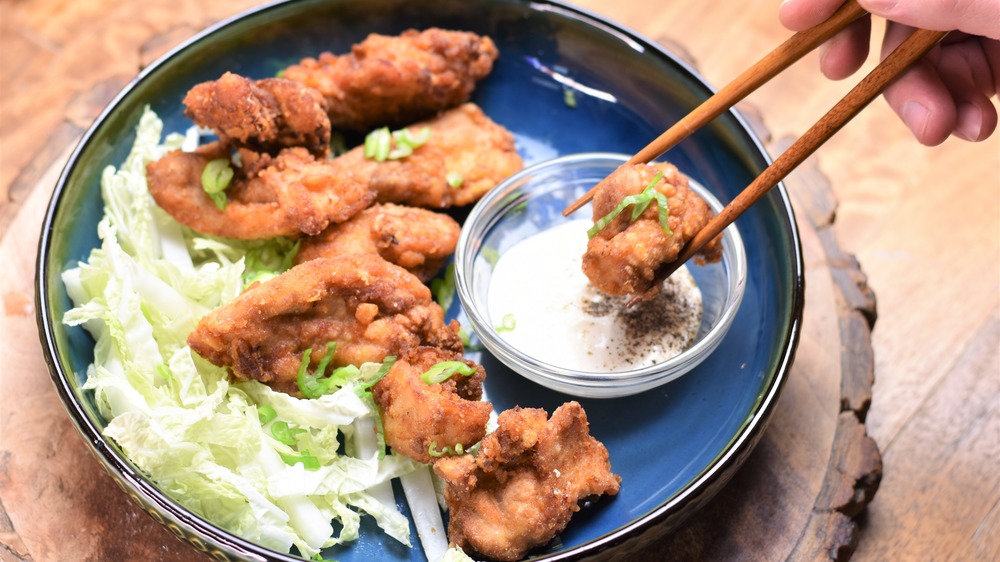
Ingredients
- 2 pounds boneless, skinless chicken thighs
- 2 tablespoons dry sherry, sake, or rice wine
- 3 teaspoons sugar, divided
- ¼ cup soy sauce
- 4-inch piece of fresh ginger
- 3 medium-large cloves garlic
- ½ cup cornstarch
- 2 tablespoons rice flour
- 1 quart canola oil
- 1 cup mayonnaise
- 1 tablespoon rice vinegar
- 1 lemon
- Fresh ground black pepper
- Sea salt
Optional Ingredients
- Green onions for garnish
Directions
- Using the side of a spoon, peel the ginger. Grate it on a rasp. Peel the garlic and either grate on the rasp, or finely chop.
- Trim the excess fat off the chicken thighs and cut into chunks, no larger than 1 inch wide. Place in a baking dish.
- Add the dry sherry, 2 teaspoons sugar, soy sauce, ginger, and garlic to the chicken. Stir to combine. Cover with plastic and marinate for at least 15 minutes in the fridge.
- Make the dipping sauce. Combine the mayonnaise, rice vinegar, juice from half the lemon, and 1 teaspoon sugar, and whisk to combine. Put a pinch of salt and fresh ground black pepper on top of the sauce before serving.
- Prepare a rimmed baking pan with a wire rack on top. Also, line a cookie sheet or large platter or plate with paper towels.
- Combine the cornstarch and rice flour in a large dish. Remove the chicken pieces from the marinade and coat in the cornstarch mixture. Set on the wire rack over the rimmed baking pan and let sit for 5 minutes.
- In a large Dutch oven or large high-sided skillet, heat the oil to 350 degrees Fahrenheit over medium-high heat. Use a candy/frying thermometer or a probe thermometer to monitor the temperature.
- Add a third of the chicken and fry until golden brown and fully cooked (to an internal temperature of 165 degrees) for 4 to 6 minutes. Remove to the paper towel-lined cookie sheet or platter. Season the chicken with sea salt as soon as you remove it from the hot oil. Slice the rest of the lemon to serve with the chicken. Garnish with green onions if you want to.
